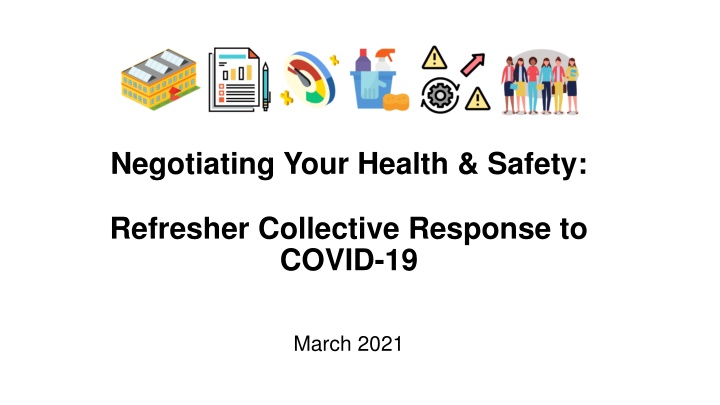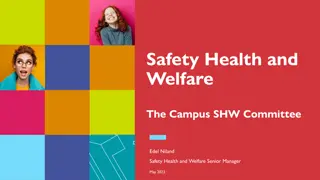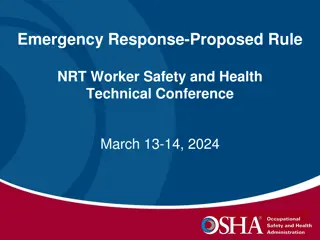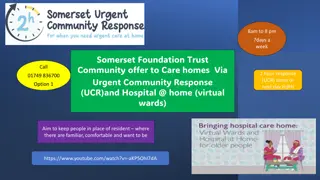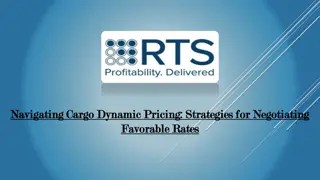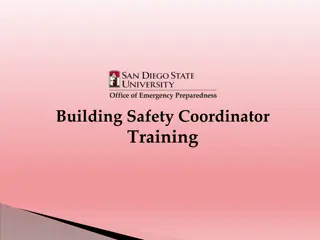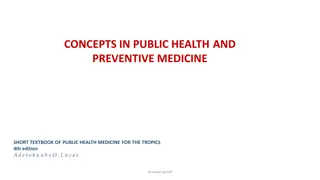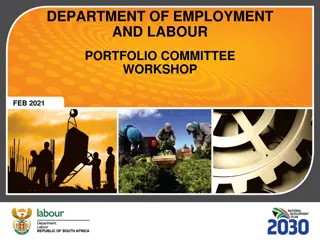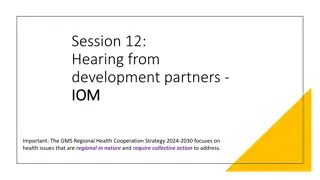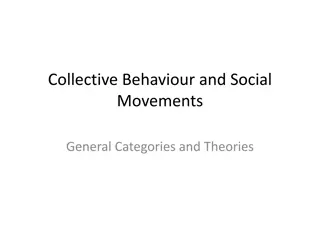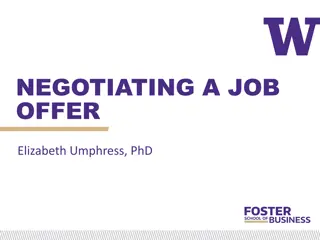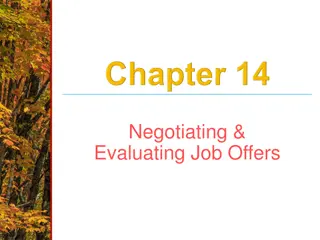Negotiating Your Health and Safety: March 2021 Collective Response
Duties, responsibilities, and entitlements related to COVID-19 safety measures for EIS reps and negotiators. Guidance on risk assessments, public health protective measures, and evaluating risks to ensure a safe environment. Learn how to consult with branch members, understand hazards, evaluate risks, and implement necessary precautions. Stay updated on guidance and collaborate effectively to maintain health and safety standards.
Download Presentation

Please find below an Image/Link to download the presentation.
The content on the website is provided AS IS for your information and personal use only. It may not be sold, licensed, or shared on other websites without obtaining consent from the author.If you encounter any issues during the download, it is possible that the publisher has removed the file from their server.
You are allowed to download the files provided on this website for personal or commercial use, subject to the condition that they are used lawfully. All files are the property of their respective owners.
The content on the website is provided AS IS for your information and personal use only. It may not be sold, licensed, or shared on other websites without obtaining consent from the author.
E N D
Presentation Transcript
Negotiating Your Health & Safety: Refresher Collective Response to COVID-19 March 2021
Content 1. Duties, Responsibilities, and Entitlements of EIS Reps, LA Secretaries and LNCT Negotiators 2. Understanding Risk Assessments during Covid-19 Vulnerable Members Mental Health 3. Agreeing and implementing Risk Assessments 4. Identifying what to do if a Risk Assessment is not in place or adhered to Negotiating Raising a Dispute
Public Health Protective Measures Scottish Government Guidance Essential public health measures include: Enhanced hygiene and environmental cleaning arrangements; Minimising contact with others (groupings, maintaining distancing for young people in secondary schools and physical distancing for adults); Wearing appropriate personal protective equipment (PPE) where necessary; A requirement that people who are ill stay at home; and Active engagement with Test and Protect.
1. What to do as an EIS Rep Consult with EIS Branch members on the school Risk Assessment. Look at individual Risk Assessments. Speak to the HT about the process you expect to follow in relation to Risk Assessments. Get a copy of the HT s Risk Assessment. Work collegiately, as an EIS Branch, with the HT on ensuring the Risk Assessment is as effective as it can be. Check in with your LA Secretary to confirm that you have a copy of the Risk Assessment and are engaging the branch in consultation. Keep updated on LNCT matters. It is the responsibility of the rep to participate in the RA.
Evaluating the Risk: 2. Understanding Risk Assessments HSE Guidance Risk Assessment Identify the hazards. Decide who might be harmed and how. Evaluate the risks and decide on precautions. Record your significant findings. Review your Risk Assessment and update if necessary. Look at what you're already doing, and the control measures you already have in place. Ask yourself: Can I get rid of the hazard altogether? If not, how can I control the risks so that harm is unlikely? Some practical steps you could take include: Trying a less risky option Preventing access to the hazards Organising work to reduce exposure to the hazard Issuing protective equipment Providing welfare facilities such as first aid and washing facilities - HSE Guidance on Risk Assessments
2. Understanding Risk Assessments Members' Guide to Risk Assessments (Updated) EIS Guidance Examining and interrogating the components of a Covid-19 Risk Assessment and Plan: Physical Distancing Cleaning and Hygiene PPE Isolation Safe Staff Levels Travel to Work
2. Understanding Risk Assessments Commuting to and from Site All Staff Safety Hazard List of control methods that must be followed to protect your health and safety. PPE/Training Requirements Risk level if control measures used Maintenance of 2 metre recommended social distancing and increased risk of infection as a result. Wherever possible private transport should be used to maintain isolation from the public when commuting to the office. Face coverings may be required if 2m distancing cannot be maintained. If public transport cannot be avoided, the employee should be encouraged to follow current government advice in respect of face coverings. Hand Sanitiser Gel should be provided in every classroom and at entry and egress points. On arrival at the site, employees should thoroughly wash their hands for at least 20 seconds or use hand sanitiser gel immediately on entry to the workplace.
2. Understanding Risk Assessments Vulnerable Employees Clinically extremely vulnerably or Critically vulnerable (over 70, pregnant, chronic asthma etc)? Disabled members and BME members Commuting to and from Site Safety Hazard List of control methods that must be followed to protect your health and safety. PPE/Training Requirements Risk level if control measures used Maintenance of 2 metre recommended social distancing and increased risk of infection as a result. Wherever possible private transport should be used to maintain isolation from the public when commuting to the office. Face coverings for all staff. Hand Sanitiser Gel should be provided in every classroom and at entry and egress points. If public transport cannot be avoided, the employee should be encouraged to follow current government advice in respect of face coverings. On arrival at the site, employees should thoroughly wash their hands for at least for 20 seconds or use hand sanitiser gel immediately on entry to the workplace. Additional staff engagement on member s particular vulnerability and how this can be minimised.
2. Understanding Risk Assessments Mental Health It's not just physical risks your employer needs to assess; workers risk poor mental health caused by stress, fear, and anxiety about returning to work in unsafe environments. Your employer should expect that some colleagues will have suffered a recent bereavement and may need time-off, counselling, and other support. And if fewer people are at work, managers must expect reduced output and not set unrealistic targets. EIS advice is available on the website ( EIS Health and Wellbeing Support - https://www.eis.org.uk/Coronavirus/Directory).
3. Agreeing and Implementing Risk Assessment Share, Consult, Record and Review. Remember the employer is responsible for the RA. The union should be consulted and have open access to the whole process. Speak to HT Only indicate you are content with the Risk Assessment and Plan if you are comfortable that all your concerns have been answered. Speak to your Local Association Secretary or Area Officer for advice. Continually review and assess the health of your workplace
4. Identifying what to do if a Risk Assessment is not in place or adhered to Is the Risk Assessment available and are the measures in it being followed? If yes, it is safe to stay at work. If not: Talk to the members/branch Talk to the employer (put your concerns in writing) Talk to your Local Association Secretary Negotiate Collective grievance or Dispute Legal Protections
Responding to Health and Safety as an EIS Branch Convene online EIS branch meetings- regular dialogue with members is key Establish a branch working group around H&S Identify members concerns Put branch concerns in writing to the HT Update your LA Secretary If concerns are not being addressed then raise a formal grievance Raise a dispute-seek support of LA Secretary and Area Officer
Building Evidence Gathering concrete evidence of members concerns around health and safety will be central to challenging and addressing the issues. Always put concerns in writing, make them clear and include your expected resolution Keep a diary of steps taken by the rep and the branch Verbal conversations should be followed up by a written summary of the discussions Members surveys and feedback, forms the basis of concrete evidence and will strengthen your case A collective petition signed by members of the branch highlights the collective sense of feeling Visually document concerns where necessary
Government Guidance Ongoing and Updated As of January 2021 the government updated several part of its guidance, however, there is still some old guidance that is relevant i.e vulnerable pupils definition. Guidance on Education Recovery https://www.eis.org.uk/Education- Advice/EducationRecovery Most Recent Govt Guidance - https://www.gov.scot/publications/coronavirus-covid-19- guidance-on-schools-reopening/ https://www.eis.org.uk/Content/images/corona/Briefing%20on%20June%20Deplo yment.pdf Blended and Remote Learning https://www.eis.org.uk/Education- Advice/Blendedremotelearning H&S School Heating Advice https://www.eis.org.uk/Health-And-Safety- Advice/SchoolHeating
What are you Happy to Settle For? We work in the environment we are happy to settle for. Come together to bargain for more. Organise together to settle only for your safety.
